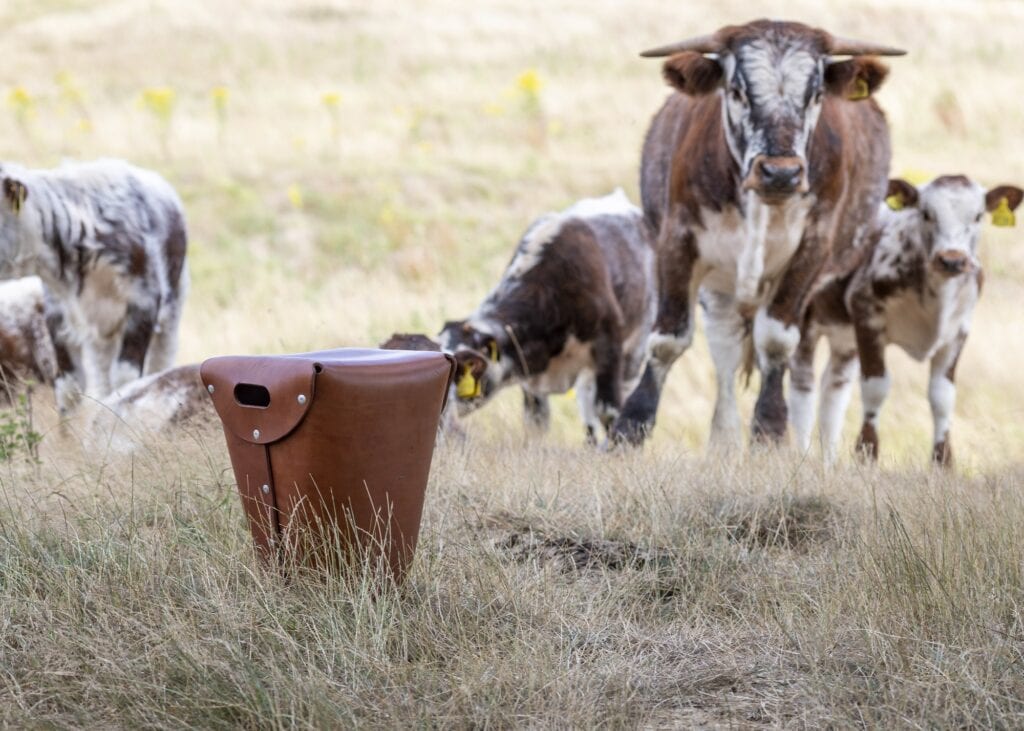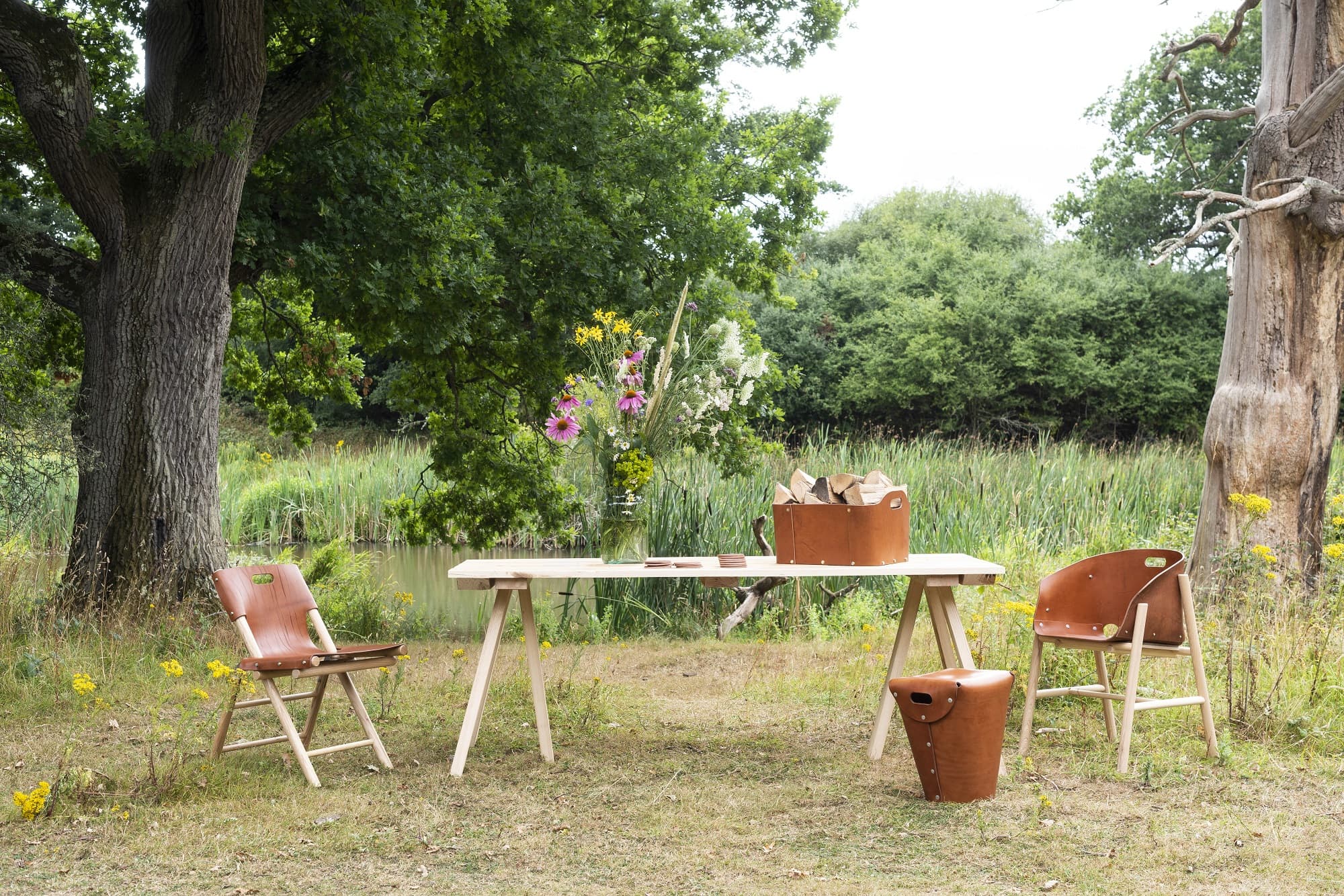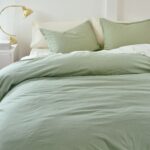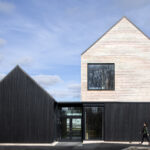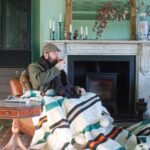What does site-inspired sustainable furniture design look like when the site is a 3,500-acre “rewilding” location in West Sussex? Bill Amberg Studio answers the question with an extremely handsome furniture collection designed for the café/farm shop set to open at Knepp Estate next year. It’s made with leather produced from hides from longhorn cattle and deer that roam the estate, and which is tanned in the U.K. Wood is diseased ash from dieback clearance. Waste and energy use during production were kept to a minimum.

Does that sound a bit familiar? If it does. it may be because you’ve read a book about the site called Wilding.
Although vegans might not characterize Amberg’s new line as sustainable furniture, Knepp makes a very good case for an ecologically-sound model that culls animals at the top, and that uses all products derived from the cull.
The Knepp Estate Wildland Project allows nature to take the lead. There, grazing animals drive habitat creation, where restoration of natural waterways, for example. draws rare turtle doves, nightingales, peregrine falcons, and purple emperor butterflies; more common species are also flourishing. And there’s convincing data about the health and climate benefits of pasture-fed meat and dairy products.
Skins are tanned at small operations in the U.K. One specializes in shoe sole leather, the other in tanning of deer hides.
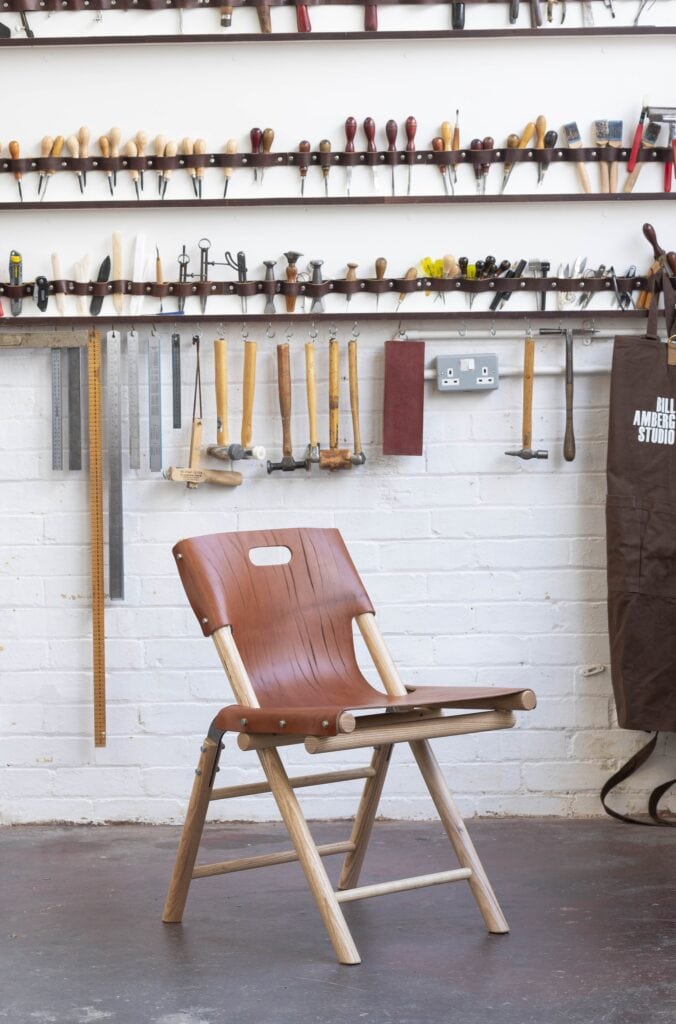
Amberg became interested in the structural possibilities of shoe sole leather-its firmness, rigidity, and durability. That drove furniture design, including a tub chair (below) that has the elegant swoop of the best MCM moulded plywood. All the fixings are simple carriage bolts and rivets, with brass washers to prevent staining.
A simple, sensational tub chair


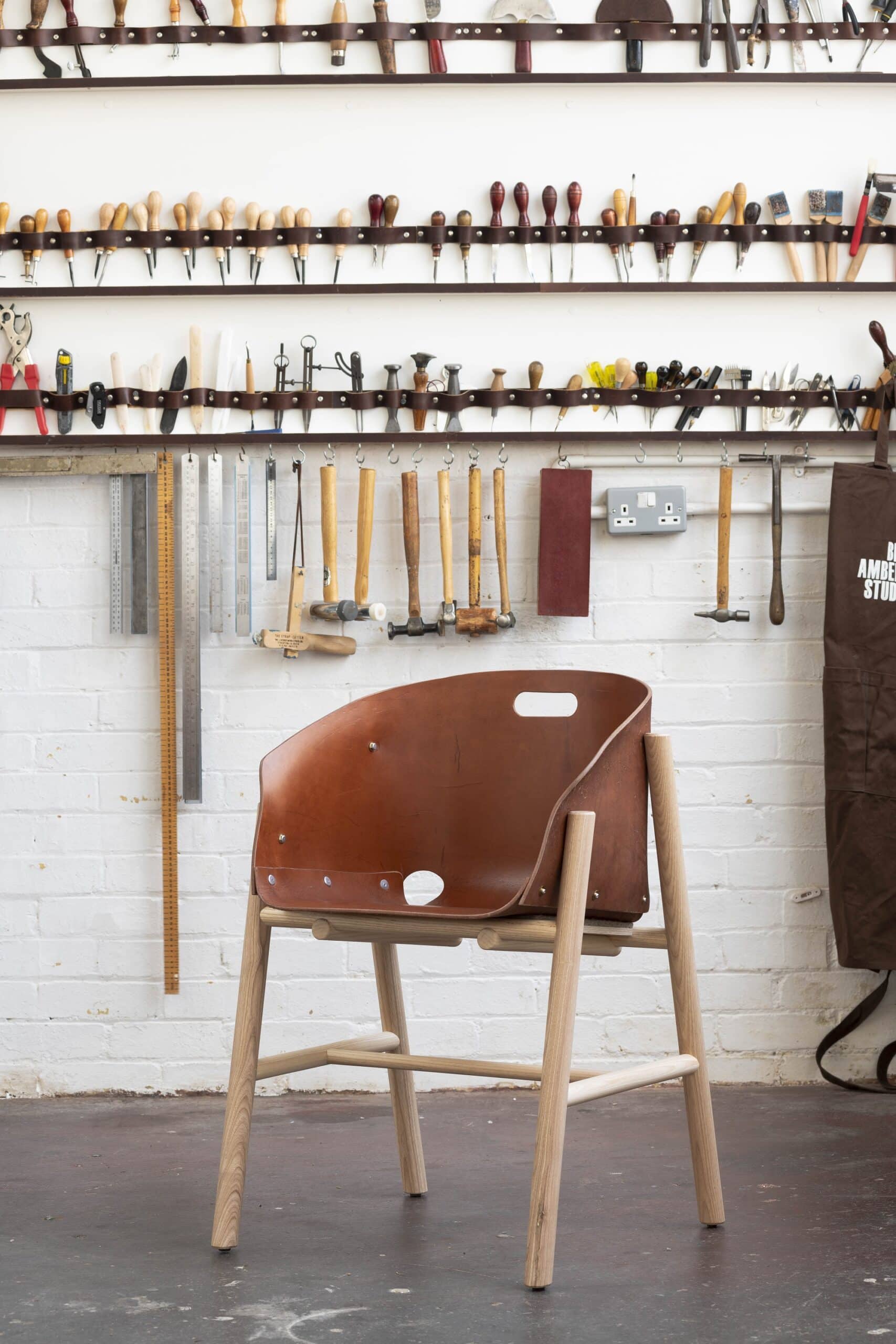

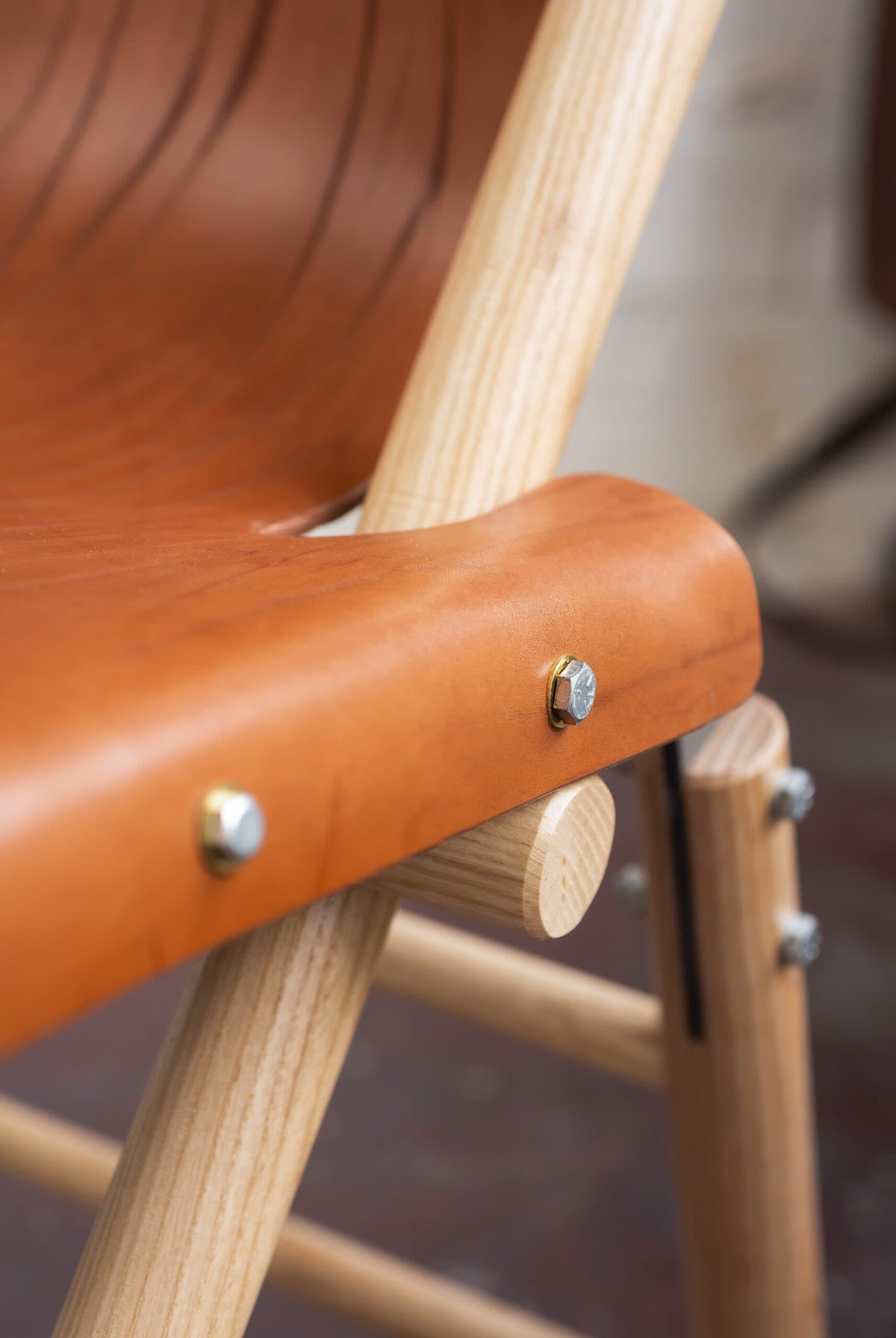
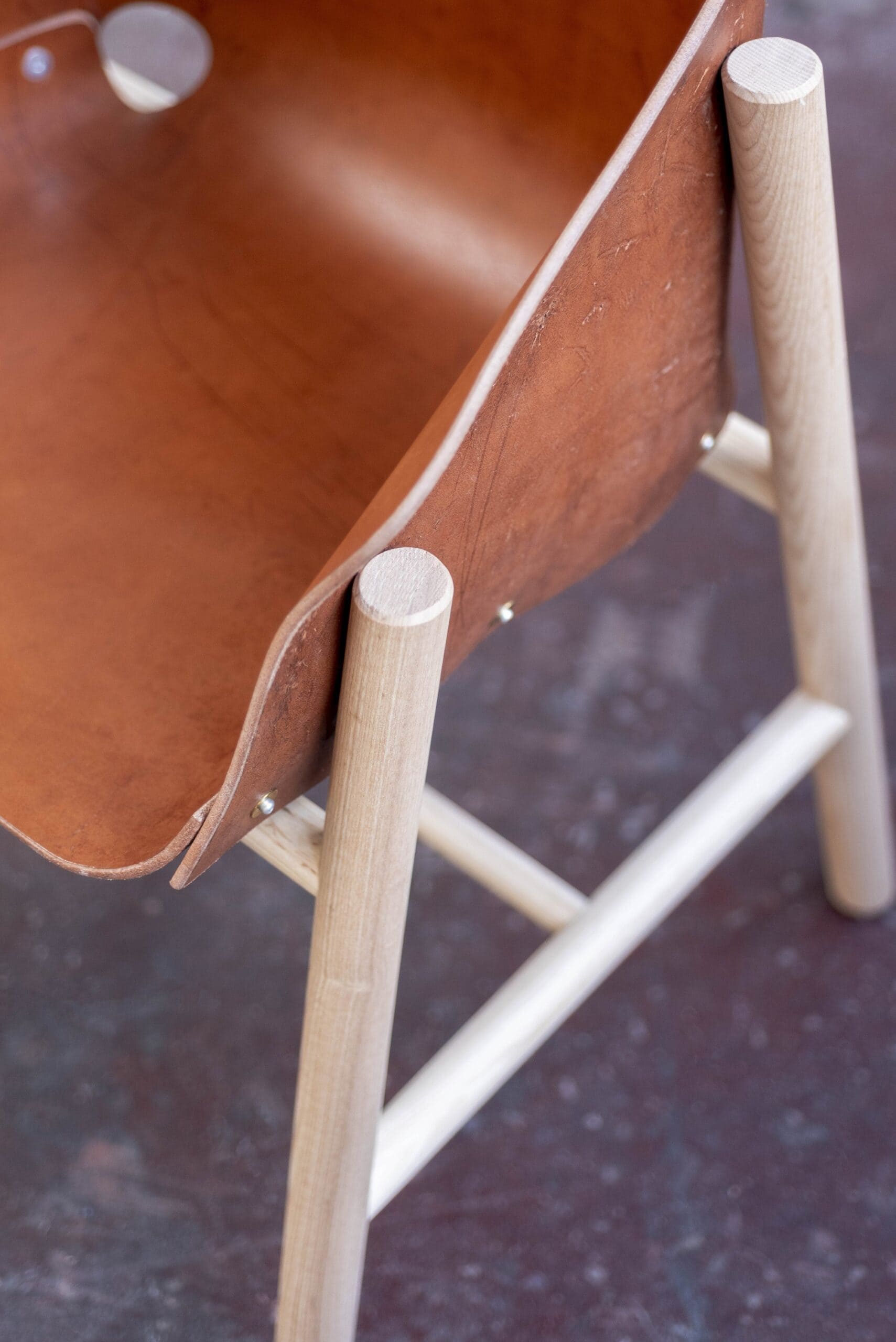
A wider horizon in view?
Inspired by the medieval aspect of barn housing the café, the collection also includes a stool, log basket, and coasters. The sustainable furniture collection officially launched during London Design Festival 2022, and is now available for the public to purchase.
One aim of Knepp Estate is to demonstrate that a process-led approach is an effective, efficient, and ecological way to restore failing or abandoned farmland. Ideally, such sites would connect to other nature reserves/wildlife sites to act as “webbing” across a larger landscape.
With an expanded public offering on site, and a beautiful, sustainable new furniture collection, the view from Knepp Estate and the Wildland Project just got a little wider. Good luck to them.
